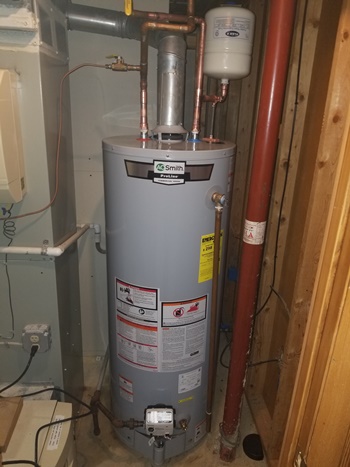Specialist Tips for Maintaining Your Home's Hot Water SystemHow to Maintain Your Home's Hot Water System Properly
Specialist Tips for Maintaining Your Home's Hot Water SystemHow to Maintain Your Home's Hot Water System Properly
Blog Article
This great article below in relation to Water Heater Maintenance Tips You Can't Afford to Forget is extremely stimulating. Don't overlook it.

Hot water is vital for everyday comfort, whether it's for a rejuvenating shower or washing dishes. To ensure your hot water system runs efficiently and lasts longer, regular maintenance is key. This write-up provides practical tips and insights on how to maintain your home's hot water system to stay clear of interruptions and pricey fixings.
Intro
Preserving your home's warm water system may appear complicated, yet with a couple of basic steps, you can ensure it operates smoothly for years ahead. This overview covers everything from understanding your hot water system to DIY upkeep tips and knowing when to contact expert assistance.
Relevance of Preserving Your Hot Water System
Routine maintenance not only extends the lifespan of your hot water system but also guarantees it runs efficiently. Neglecting maintenance can bring about lowered performance, greater power costs, and also premature failure of the system.
Indications Your Hot Water System Requirements Maintenance
Knowing when your hot water system needs focus can protect against significant problems. Look out for signs such as inconsistent water temperature level, odd noises from the heater, or rusty water.
Flushing the Hot Water Heater
Purging your hot water heater removes sediment build-up, boosting effectiveness and lengthening its life.
Monitoring and Changing Anode Rods
Anode poles avoid corrosion inside the container. Checking and replacing them when worn out is important.
Facility Concerns Needing Expert Help
Examples consist of significant leaks, electrical troubles, or if your water heater is consistently underperforming.
Routine Specialist Maintenance Perks
Specialist upkeep can consist of comprehensive examinations, tune-ups, and guaranteeing conformity with safety requirements.
Evaluating and Changing Temperature Setups
Adjusting the temperature setups ensures optimum performance and safety and security.
DIY Tips for Upkeep
You can carry out numerous maintenance tasks on your own to keep your warm water system in leading condition.
Checking for Leaks
Consistently inspect pipelines and connections for leakages, as these can result in water damages and higher costs.
Comprehending Your Warm Water System
Before diving into maintenance tasks, it's valuable to understand the fundamental parts of your hot water system. Commonly, this includes the hot water heater itself, pipes, anode rods, and temperature controls.
Regular Monthly Maintenance Tasks
Routine monthly checks can aid catch small concerns before they intensify.
Checking Pressure Relief Valves
Examining the pressure relief valve guarantees it operates properly and protects against too much pressure accumulation.
Insulating Pipes
Shielding hot water pipelines reduces warm loss and can conserve power.
When to Call a Specialist
While DIY upkeep is advantageous, some problems call for professional competence.
Verdict
Regular maintenance of your home's warm water system is essential for effectiveness, long life, and price savings. By following these ideas and recognizing when to look for specialist help, you can guarantee a trusted supply of warm water without unexpected disruptions.
How to Maintain an Instant Hot Water Heater
Before tinkering with your hot water heater, make sure that it’s not powered on. You also have to turn off the main circuit breaker and shut off the main gas line to prevent accidents. Also turn off the water valves connected to your unit to prevent water from flowing into and out of the appliance. 2. When you’re done, you have to detach the purge valves’ caps. These look like the letter “T” and are situated on either side of the water valves. Doing so will release any pressure that has accumulated inside the valves while at the same time avoid hot water from shooting out and burning your skin. 3. When the purge valves’ caps are removed, you have to connect your hosing lines to the valves. Your unit should have come with three hoses but if it didn’t, you can purchase these things from any hardware or home repair shops. You can also get them from retail stores that sell water heating systems. Read the user’s manual and follow it to complete this task properly. When the hosing lines are connected, open the purge port’s valves. 4. You should never use harsh chemical cleaners or solutions when cleaning your unit. Make use of white vinegar instead. It should be undiluted and you’ll probably use about 2 gallons. 5. Now flush your water heater. This task should probably take about 40 minutes. We can’t give you specific directions for this because the procedure is carried out depending on the type, model and brand of your heater. With that being said, refer to the user’s manual. 6. When you’re done draining the unit, you have to turn off the purge port valves again. Remove the hosing lines that you earlier installed on each of the water valves. Put the valve caps (purge port) back in their respective places and be very careful so as not to damage the rubber discs that are found inside these caps. 7. Now that everything’s back in place, check your user’s manual again to find out how to reactivate your water heating system. 8. Once it is working, turn one of your hot water faucets on just to let air pass through the heater’s water supply pipes. Leave the tap on until water flows smoothly out of it. https://www.orrplumbing.com/blog/2014/september/how-to-maintain-an-instant-hot-water-heater/
:max_bytes(150000):strip_icc()/reasons-gas-water-heater-not-working-5212987-hero-fe6b82a59053421c88b7d13ea311d3c5.jpg)
I recently found that blog post about How to Maintain a Hot Water Heater in a Few Simple Steps while exploring the internet. Are you aware of anybody else who is fascinated with the subject? Please feel free to share it. We recognize the value of your readership.
Book An Estimate Now Report this page